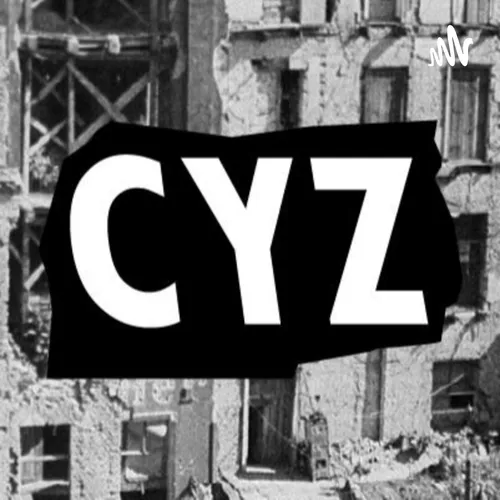
Cinema Year Zero
Audio versions of essays from Cinema Year Zero
- Update frequency
- every day
- Average duration
- 9 minutes
- Episodes
- 137
- Years Active
- 2020 - 2025

PICKELPORNO | VISCERA
Dan Wilkinson takes affront at the new mode of prudishness ushered in by the internet age, presenting the unfiltered sexuality of experimental films Pickelporno and Sweet Love Remembered as possible …

INTRO | THE CRITIC
The uneasy status of Film Criticism is readily discussed.

A STAR IS BURNS | THE CRITIC
Blaise Radley profiles pop-culture’s greatest representation of the film critic: Jay Sherman, the animated hack and one-time Simpsons guest star.

THE HUMAN SURGE 3 | THE CRITIC
Joseph Owen returns to the Locarno Film Festival, where he casts a sideways the economics of the professional film critic between bottles of Swiss red.

EO | THE CRITIC
Fedor Tot delves into the world of the film festival critics workshop, asking if its purpose serves less to help individual participants than to uphold institutional compliance.

THE THEORY OF EVERYTHING | THE CRITIC
Orla Smith explores her personal history with the film catalog-turned-social media app Letterboxd as a way of marking changing taste and sharpening perspective.

LEAVING THE MOVIE THEATRE | THE CRITIC
Natasha Fedorson takes Roland Barthes ‘Leaving the Movie Theater’ as a conduit for her own ruminations on the spaces where we can engage with the medium.

MADE IN U.S.A | THE CRITIC
Esmé Holden gives a close reading of the ultimate critic-turned-filmmaker Jean Luc-Godard’s key 1966 film Made in U.S.A.

MARIE ANTOINETTE | THE CRITIC
Kirsty Asher finds Youtube a safe haven for a specific kind of film criticism: analysis of costume design as a key element of the cinematic image.

THIS YOUNG MONSTER | THE CRITIC
Wilde Davis pushes against print criticism as an avenue for transgressive film analysis, and instead finds solace in the cinematic reflections of queer artists.

INTRO | PORTALS OF THE PAST
Cinema Year Zero Volume 14: Portals of the Past

BLOOD AND SAND | PORTALS OF THE PAST
Ben Flanagan brings us a round-up of the triumphant Mamoulian programme at the most historiographical of festivals, Il Cinema Ritrovato.

UNLIVABLE LIVES | PORTALS OF THE PAST
Cathy Brennan evokes productive power in relation to internet video clips of violence against trans women.

MUSIC | PORTALS OF THE PAST
James Brice considers Music, Angela Schalenec’s most recent contribution to the Berlin School, and its position in the shadow of German reunification.

EUROPE '51 | PORTALS OF THE PAST
Anand Sudha analyses the intersection between antiquated spirituality and the modern in Rossellini’s Europe ‘51.

IL PIANETA AZZURRO | PORTALS OF THE PAST
Dylan Adamson relays how the heliotropic camerawork of Franco Piavoli lends itself to a world governed by nature rather than the human concept of time.

THE TAKING OF JORDAN (ALL AMERICAN BOY) | PORTALS OF THE PAST
Wilde Davis examines the use of late 20th-century amateur porn in Kalil Haddad’s new archive-driven short as a means of resisting the rising commodification of queer culture and politics.

WE'RE ALL GOING TO THE WORLD'S FAIR | BLEEDING EDGE
Miranda Mungai posits a notion of Online Realism, to pull together strands connecting films as disparate as The Menu and We’re All Going to the World’s Fair.

PEOPLE MAKE TELEVISION | BLEEDING EDGE
Sarah Cleary braves the Barley setting of Shoreditch to visit People Make Television at Raven Row Gallery, and finds that some of Britain’s most radical televisual communication occurred over 35 year…

I WAS SPEECHLESS XD | BLEEDING EDGE
Cathy Brennan uses a 30-second street interview clip on Twitter and uses it to opine on trans women’s relationship to the camera.